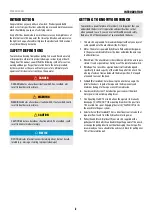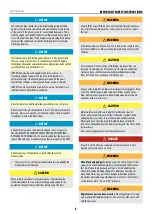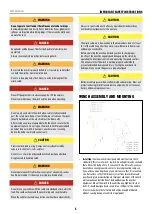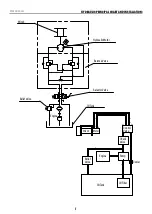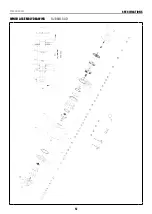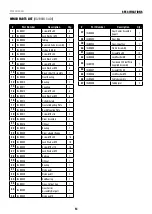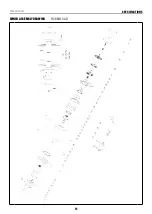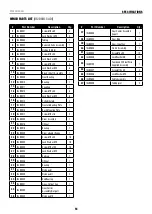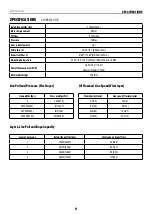
WINCH MANUAL
INTRODUCTION
2
INTRODUCTION
Congratulations on your purchase of a winch. We design and build
winches to strict specifications and with proper use and maintenance your
winch should bring you years of satisfying service.
Every effort has been made to ensure the accuracy and completeness of
the information in this manual at the time of publication, and we reserve
the right to change, alter and/or improve the product and this document
at any time without prior notice.
SAFETY DEFINITIONS
Your winch can develop tremendous pulling forces and if used unsafely
or improperly could result in property damage, serious injury or death.
Throughout this manual, you will find the following symbols for caution,
warning and danger. Pay particular attention to the notes preceded
by these symbols as they are written for your safety. Ultimately, safe
operation of this device rests with you, the operator.
DANGER
DANGER indicates a hazardous situation which,if not avoided, will
result in death or serious injury.
WARNING
WARNING indicates a hazardous situation which, if not avoided, could
result in death or serious injury.
CAUTION
CAUTION indicates a hazardous situation which, if not avoided, could
result in minor or moderate injury.
NOTICE
NOTICE indicates information considered important, but not hazard-
related (e.g., messages relating to property damage).
GETTING TO KNOW YOUR WINCH
Your winch is a powerful piece of machinery. It is important that you
understand the basics of its operation and specifications so that
when you need to use it, you can use it with confidence and safety.
Below is a list of the components of your winch and their uses.
1. This winch is engineered for maximum line pull with only one layer of
cable spooled onto the winch drum (the first layer).
2. Motor: The motor is powered by hydraulic fluid and provides power
to the gear assembly which turns the drum and winds the wire rope
in either direction.
3. Winch Drum: The winch drum is the cylinder on which the wire rope is
stored. It can be spooled In or Out by use of the remote lead switch.
4. Wire Rope: Your winch has a galvanized aircraft cable designed
specifically for load capacity of the rated line pull of this winch. The
wire rope feeds on from underneath the drum position, it is looped
at one end to accept the hook.
5. Fairlead (Not Included): For when using the winch at an angle the
roller fairlead acts to guide the rope onto the drum evenly and
minimizes damage to the rope or winch from abrasion.
6. Gear Assembly System: The reduction gears convert the winch
motor power into extreme pulling forces.
7. Free Spooling Clutch: The clutch allows the operator to manually
disengage (“CLUTCH OUT”) the spooling drum from the gear train.
This is called free spool. Engaging the clutch (“CLUTCH IN”) locks
the winch into the gear system.
8. Selector Valve: (Not Included) This is a directional control valve that
regulates flow to and from the hydraulic motor to power.
9. Pulley/Snatch Block: (Optional) If your winch is supplied with a
pulley/snatch block which can double the pulling power of the winch,
or change the pulling direction without damaging the wire rope. We
recommend you to use a double line and snatch block for pulling over
70% of the rated line pull.
Summary of Contents for 13JR02H-CAD
Page 12: ...Winch Manual SPECIFICATIONS 12 WINCH ASSEMBLY DRAWING 13JR02H CAD...
Page 15: ...Winch Manual SPECIFICATIONS 15 WINCH ASSEMBLY DRAWING 15JR02H CAD...
Page 18: ...Winch Manual SPECIFICATIONS 18 WINCH ASSEMBLY DRAWING 20JR02H CAD...
Page 21: ...Winch Manual SPECIFICATIONS 21 WINCH ASSEMBLY DRAWING 25JR02H CAD...
Page 24: ...Winch Manual SPECIFICATIONS 24 WINCH ASSEMBLY DRAWING 30JR02H CAD...


